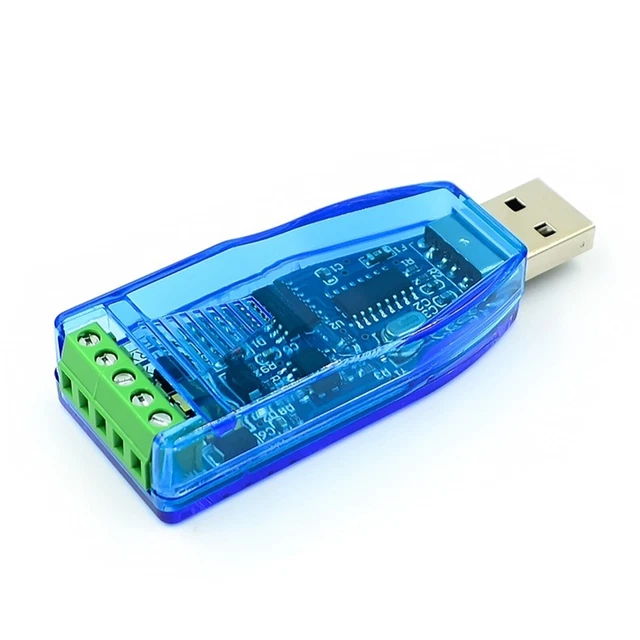If a Star Configuration is Unavoidable
페이지 정보

본문
Just because a protocol is used with a particular implementation of RS-232 or RS-485, does not mean it is part of the standard. It does not mean that this protocol is part of the standards or that only this protocol may be used with the 232/422/485 standards. The physical layer may include a connector, wires, and electrical levels, but does not include the bit and framing protocol of the UART. Bit and framing protocols are in layer two of the OSI model. If A is negative with respect to B, the state is binary 1. The reversed polarity (A positive with respect to B) is binary 0. The standard does not assign any logic function to the two states. For an off, mark or logic 1 state, the driver's A terminal is negative relative to the B terminal. For an on, space or logic 0 state, the driver's A terminal is positive relative to the B terminal. 5 V relative to the signal ground. Without termination resistors, signal reflections off the unterminated end of the cable can cause data corruption. It defines a means of exchanging control signals and binary serialized data signals between data processing terminal equipment and data communication equipment, and is of particular importance when each is furnished by a different company.

It defines a means of exchanging control signals and binary serialized data signals between data terminal equipment and a data communication channel in cases where interchange point. PURPOSE AND SCOPE OF COVERAGE - This standard is applicable to the interconnection of data terminal equipment (DTE) and data circuit-terminating equipment (DCE) employing serial binary data interchange. PURPOSE AND SCOPE OF COVERAGE - This standard is intended to provide a method of interconnecting data terminal equipment and a data communication channel when each is furnished by different companies. This type of port was needed to transfer data from/to a printer, modem, or in rare cases a mouse. These other standards provide the protocol and other requirements that are needed for two devices to transfer information. ANSI/TIA/EIA-485, commonly called RS-485, is a standard defining the physical layer of a two wire multipoint communications network. RS-485, also known as TIA-485(-A) or EIA-485, is a standard, originally introduced in 1983, defining the electrical characteristics of drivers and receivers for use in serial communications systems. In the early 80’s IBM introduced the IBM PC. When IBM introduced the PC/AT they also changed the physical format of the serial port connector to a D-sub, E-shell, 9-pin connector (a DE-9 commonly miscalled a DB-9).
When IBM changed to the new connector they also changed the electrical signal levels. RS-485 typically uses a linear network with bidirectional signal wires: There are typically many devices along a RS-485 shared cable. This appendix will attempt to explain what RS-232, RS-422, and RS-485 are and are not; then discuss one of the more common implementations of RS-422 and RS-485, asynchronous start-stop ASCII communication with a UART. The diagram below shows potentials of the A (blue) and B (red) pins of an RS-485 line during transmission of one byte (0xD3, RS485 standard least significant bit first) of data using an asynchronous start-stop method. Many references and examples are made to "asynchronous start-stop communication with a UART" or "UART" communications. A final thing to note is that this model falls apart if the lines are not of infinite length. The termination also includes pull up and pull down resistors to establish fail-safe bias for each data wire for the case when the lines are not being driven by any device. In a RS-485 cable, data typically flows in both directions along any particular wire, sometimes from the "A" of the first device to the "A" of the second device, and at a later time from the "A" of the second device to the "A" of the first device.
A RS-485 interface will usually use pins 7 and 8 for the two data lines, since they comprise a twisted pair. This allows RS-485 to implement linear bus topologies using only two wires. Ideally, the two ends of the cable will have a termination resistor connected across the two wires. The value of each termination resistor should be equal to the cable characteristic impedance (typically, 120 ohms for twisted pairs). Alas, a long 3-conductor cable intended for RS-232 can not be switched to full-duplex RS-485, RS485 standard which requires 5 conductors. Many people recommend wiring things up on a prototype with Category 5 cable connected as point-to-point full-duplex RS-485. Each pair can transmit at full speed whether or not the other pair is transmitting (full-duplex). From a hardware point of view, full-duplex RS-485 has some major advantages over RS-232 -- it can communicate over much longer distances at higher speeds. The new IBM PC/AT serial port no longer used the RS-232 25-pin connector or signal levels, but IBM took care to ensure that the new serial port’s electrical levels would still work with existing serial port peripherals, requiring only a 9-pin to 25-pin adapter. This serial port was no longer a "RS-232 compatible" serial port since the connector and signal levels no longer matched the RS-232 standard.
- 이전글Best 10 Telegram Casino Bots And Channels For 2024 24.05.21
- 다음글Title: Understanding Transmission: How Power Moves in Mechanical Systems 24.05.21
댓글목록
등록된 댓글이 없습니다.

